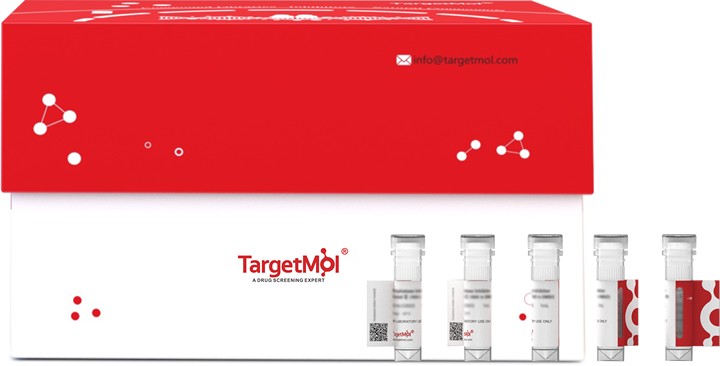购物车
全部删除  您的购物车当前为空
您的购物车当前为空
Klrb1a Protein, Mouse, Recombinant (His) is expressed in HEK293 mammalian cells with His tag. The predicted molecular weight is 19.70 kDa and the accession number is P27811.

| 规格 | 价格 | 库存 | 数量 |
|---|---|---|---|
| 5 μg | ¥ 493 | 6-8日内发货 | |
| 10 μg | ¥ 790 | 6-8日内发货 | |
| 20 μg | ¥ 1,330 | 5日内发货 | |
| 50 μg | ¥ 2,580 | 5日内发货 | |
| 100 μg | ¥ 5,170 | 5日内发货 |
| 生物活性 | Activity testing is not tested. It is theoretically active, but we cannot guarantee it. |
| 产品描述 | Klrb1a Protein, Mouse, Recombinant (His) is expressed in HEK293 mammalian cells with His tag. The predicted molecular weight is 19.70 kDa and the accession number is P27811. |
| 种属 | Mouse |
| 表达系统 | HEK293 Cells |
| 标签 | C-His |
| 蛋白编号 | P27811 |
| 别名 | Nkrp1-a,NKR-P1A,Nkrp1a,NKRP12,NKR-P1.7,ly-55A,Ly55a,killer cell lectin-like receptor subfamily B member 1A |
| 蛋白构建 | Gln67-His227 |
| 蛋白纯度 | > 95% as determined by Tris-Bis PAGE; > 95% as determined by HPLC |
| 分子量 | 19.70 kDa (Predicted); 25-35 kDa (Due to glycosylation) |
| 内毒素 | Less than 1EU per μg by the LAL method. |
| 蛋白性状 | Lyophilized powder |
| 缓冲液 | Lyophilized from 0.22μm filtered solution in PBS (pH 7.4). Normally 8% trehalose is added as protectant before lyophilization. |
| 复溶方法 | Reconstitute the lyophilized protein in distilled water. The product concentration should not be less than 100 μg/ml. Before opening, centrifuge the tube to collect powder at the bottom. After adding the reconstitution buffer, avoid vortexing or pipetting for mixing. |
| 存储 | It is recommended to store recombinant proteins at -20°C to -80°C for future use. Lyophilized powders can be stably stored for over 12 months, while liquid products can be stored for 6-12 months at -80°C. For reconstituted protein solutions, the solution can be stored at -20°C to -80°C for at least 3 months. Please avoid multiple freeze-thaw cycles and store products in aliquots. |
| 运输方式 | In general, Lyophilized powders are shipping with blue ice. Solutions are shipping with dry ice. |
| 研究背景 | CD161 (NKRP1) is a lectin-like receptor present on NK cells and rare T-cell subsets. We have observed CD161 expression in some cases of T-cell prolymphocytic leukemia (T-PLL) and found it to be useful in follow-up and detection of disease after treatment. |